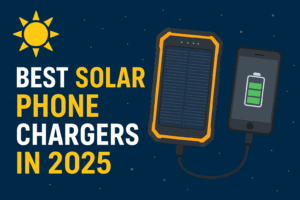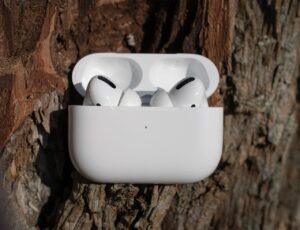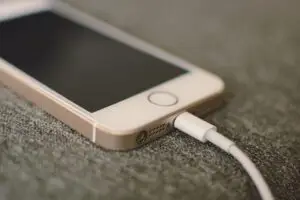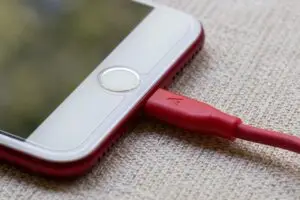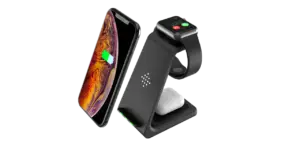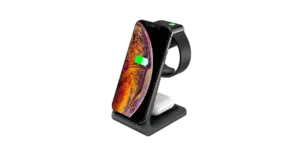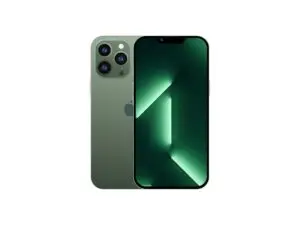Introduction
Why Choosing the Right Charger Matters
Let’s be real: not all iPhone chargers are created equal. You’d think a charger is a charger. Wrong. In 2025, with all the advancements in charging tech, the wrong charger can mean slow charge speeds, damaged cables, or even worse damage to your iPhone battery health. Apple has created optimized battery charging and fast-charging capability in its phones, which only work properly with a suitable charger.
Scenario: you’re getting ready to head out for a meeting, and your phone’s at 10%. You plug in your cheap charger, wait 20 minutes, and you’re still below 30%. Frustrating, isn’t it? The right charger can top up your iPhone to 50% in under 30 minutes. That’s the kind of performance that you’ll feel.
Apple’s newer iPhones—specifically from iPhone 12 and later—include USB-C to Lightning fast charging. To take advantage, though, you need a charger that also supports USB Power Delivery (USB-PD). Those older USB-A chargers just aren’t going to cut it. Forget the fact that it’s like putting cheap gas in a sports car when you’re using a cheap charger with your $1,000 phone.
Disclaimer: This post contains affiliate links. I earn a commission if you purchase through my links.
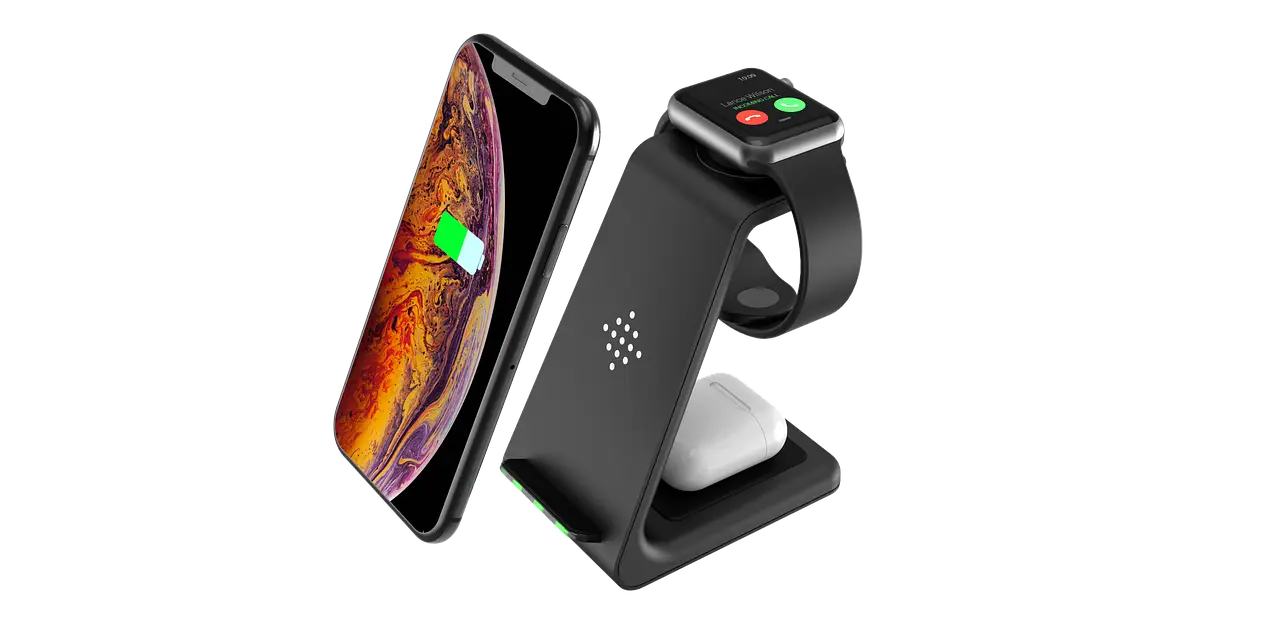
Overview of Charging Technologies (Fast Charging, Wireless, MagSafe)
iPhone charging has evolved from simple plug-in cables to high-speed and cable-free iPhone charging has evolved from simple plug-in cables to cableless and fast versions. Here’s the lowdown:
- Fast Charging: Began with iPhone 8, but with later models, they’ve nailed it. You can go from 0% to 50% in roughly 25 minutes using a 20W USB-C charger.
- Wireless Charging: Standardized with the Qi protocol. You just place your iPhone on a compatible pad—no cables necessary.
- MagSafe: Introduced with iPhone 12, this magnetic charging system aligns the phone perfectly with the charger for more efficient wireless charging up to 15W.
All have their pluses, and understanding which will fit your style can help power up your day-to-day charge. If you hate cords, wireless is your best friend. If you are a speed freak, fast charging is a slam dunk.
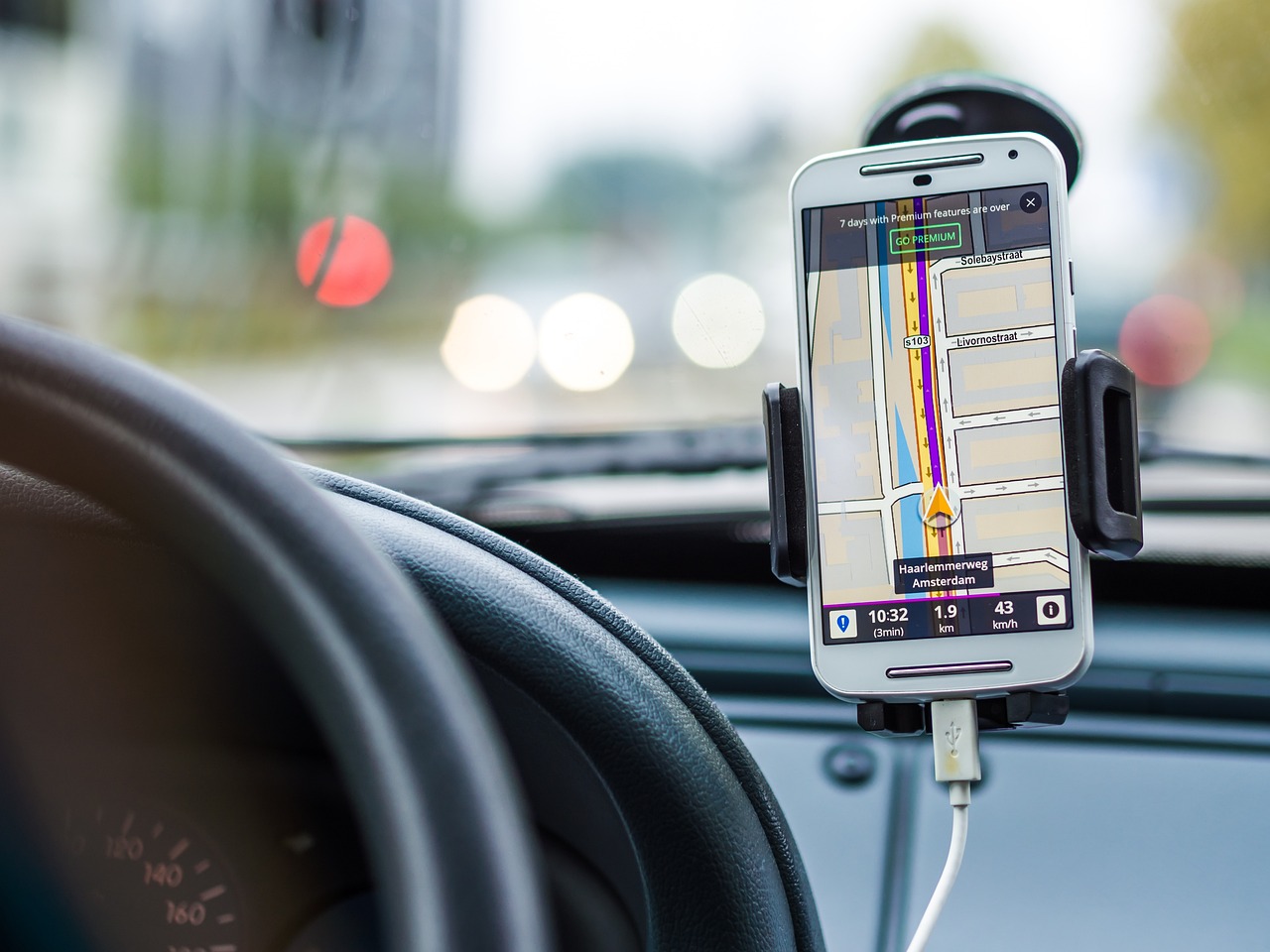
Types of iPhone Chargers
USB-A vs USB-C Chargers
The struggle between old and new. USB-A has been with us for decades, and USB-C is the new kid on the block that’s faster and more powerful. Here’s how they compare:
- USB-A: The old, rectangular port. Most of us have a drawer full of these chargers. They’re okay for charging overnight but can’t manage fast charging.
- USB-C: The newer, smaller, reversible connector that supports faster data transfer and higher power delivery. Paired with a Lightning cable, USB-C can fast-charge compatible iPhones up to 50% in just 30 minutes.
So, if you’ve got a newer iPhone (iPhone 12 or later), investing in a USB-C charger is essential. Apple even ditched including chargers in the box, nudging users to upgrade to USB-C for optimal performance.
Lightning Cable Basics
Apple’s proprietary Lightning connector has been on the scene since 2012, and it’s still the primary port for iPhones. But here’s what matters in 2025:
- MFi-Certified Lightning Cables: “Made for iPhone/iPad” means Apple-tested and Apple-approved. The non-certified kind? They can easily break or overcharge your phone.
- USB-C to Lightning: A must for fast charging. Those USB-A to Lightning cables from back in the day simply won’t get the juice there fast enough.
If you’re using an inexpensive Lightning cable from a no-name manufacturer, it could cost you in the long run. Your best bet? Apple-certified cables or reputable brands like Anker, Belkin, or Aukey.

Wireless Charging Pads and Stands
Wireless charging is a must-have for those iPhone fans that love convenience. No more cord-fiddling; you just set your iPhone on a charging pad or prop it up in a stand. Easy, tidy, and amazingly fast.
There are two types in general:
- Flat Pads: Ideal on the bedside table. Just put the phone down and charge.
- Stands: Perfect for kitchen countertops or desks, enabling you to use your phone while it’s being charged.
Wireless charging works through electromagnetic induction—essentially, it’s energy being transferred through coils in the pad and phone. There is a catch, though: wireless charging is slower than wired. Most Qi wireless chargers can charge iPhones at up to 7.5W, but MagSafe can go up to 15W.
What is MagSafe and How it Works
MagSafe reinvented wireless charging. Debuting on the iPhone 12, it uses a circle of magnets around the wireless charging coil to snap your iPhone into perfect alignment with the charger. It makes charging faster, more consistent, and avoids overheating.
MagSafe chargers can provide up to 15W of wireless charging—twice as fast as standard Qi chargers. The magnetic hold also opens a world of accessories: wallets, car mounts, stands, and even battery packs.
MagSafe is not only about charging – it’s an ecosystem. If you want easy, convenient charging with some extra features, MagSafe is essential.
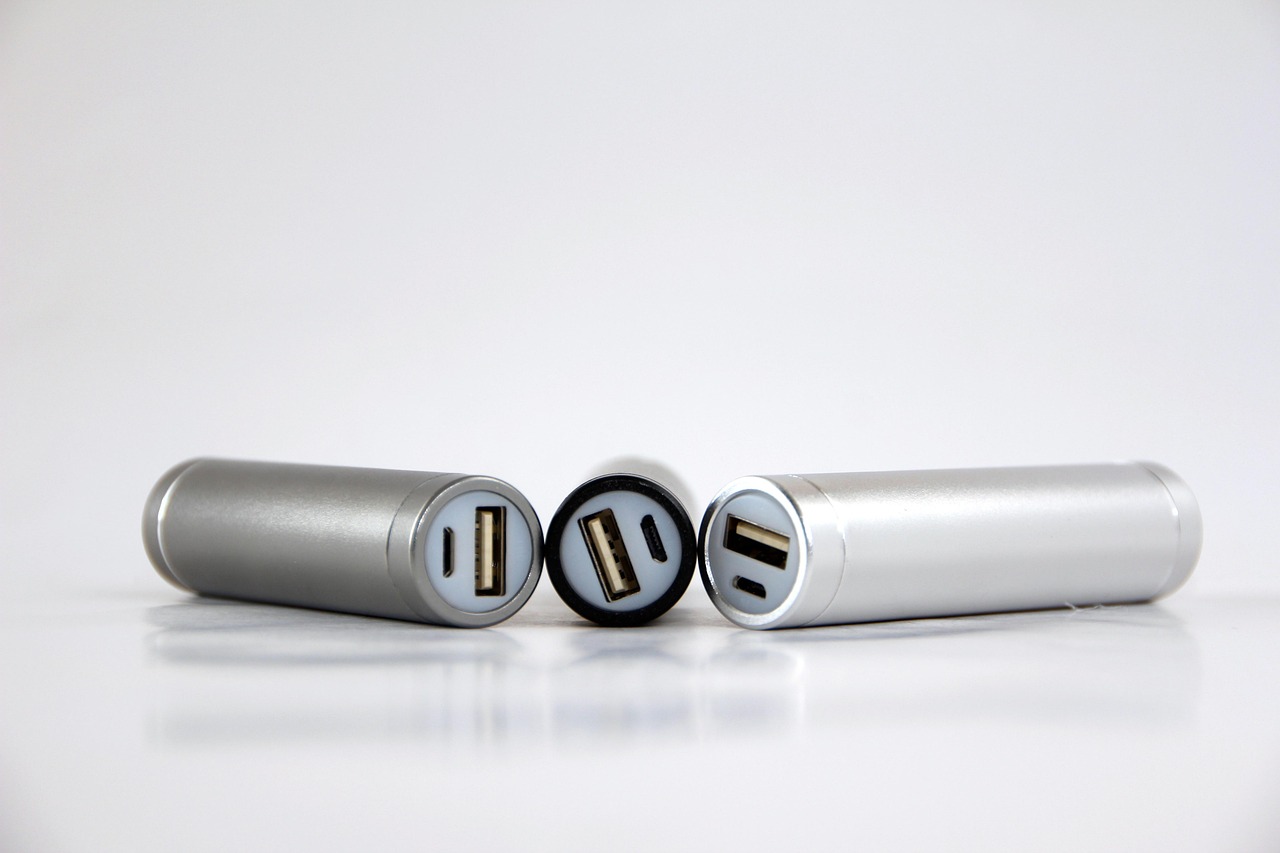
Apple-Certified vs Third-Party Chargers
MFi Certification: What It Means
When purchasing iPhone chargers, you must have seen the words “MFi Certified.” But what is it actually? MFi merely stands for “Made for iPhone/iPad/iPod.” It’s Apple’s official licensing program, and it guarantees that a product has been approved by Apple for safe and effective use with its products.
Why does it matter? Because non-certified chargers can be less expensive to purchase initially, but they can wreak havoc on your phone. We’re referring to:
- Overheating
- Damaged batteries
- Connection problems
- Shortened charging cable life
An MFi-approved charger has a tiny authentication chip inside that ensures compatibility. If your iPhone is showing you a warning like “This accessory may not be supported,” then you are likely using a non-MFi charger. Just look for the MFi logo on the product page or packaging. There are several brands, including Belkin, Anker, Nomad, and Native Union, that specialize in premium, Apple-approved accessories.
Are Third-Party Chargers Safe to Use?
Not all third-party chargers are created equal. Some are built like tanks, others are. cheap knockoffs. The trick is to know what you’re buying. Safe third-party chargers:
- Are from trusted brands.
- Are MFi-certified
- Have positive reviews and good warranties
Unsafe chargers, on the other hand, can fry your phone’s internals or even start a fire. They typically lack any insulation, voltage regulation, or overheat protection. It’s not worth risking your $1,000 iPhone to save $10 on a charger. It’s the same as putting cheap tires on an expensive car—don’t do it.
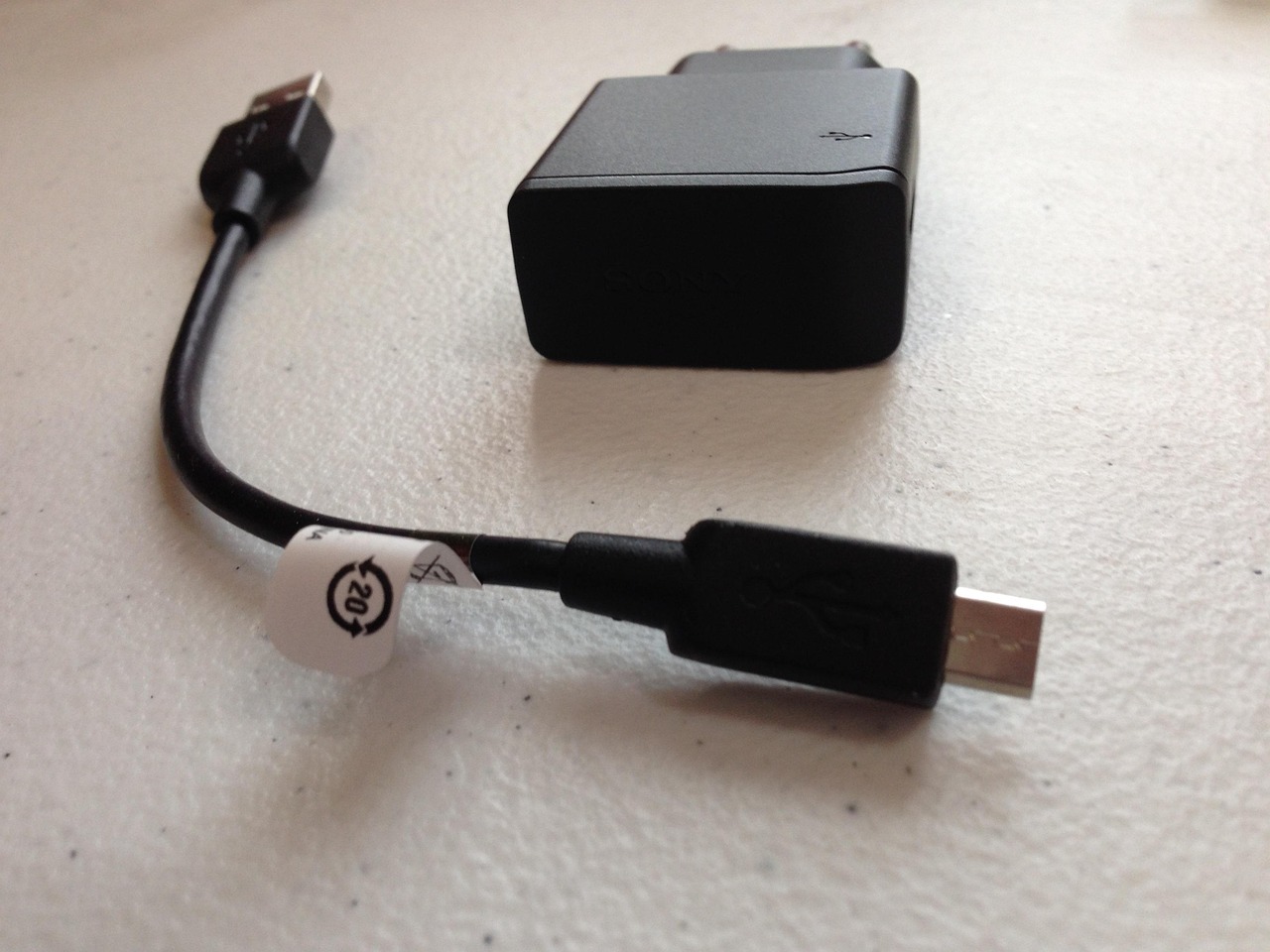
Recommended Brands and Chargers
When unsure, go with the professionals. Following are some highly rated, reputable brands for iPhone chargers in 2025:
| Brand | Notable Products | Why It’s Recommended |
|---|---|---|
| Anker | Nano II, PowerPort III | Fast, compact, and MFi certified |
| Belkin | BoostCharge Pro, MagSafe 3-in-1 Stand | Trusted Apple partner, durable, sleek design |
| Spigen | ArcStation Pro, PowerArc | Affordable yet premium quality |
| Nomad | Base One Max, Universal Cable | Rugged build and luxury design |
| Apple | 20W USB-C Adapter, MagSafe Charger | Guaranteed compatibility and optimal performance |
Stick to any of these, and you’re golden—no warnings, no surprises, just safe, efficient charging.
Fast Charging for iPhones
How Fast Charging Works on iPhones
Fast charging isn’t hype—it’s real, and it’s a game changer. With the right charger and cable combination, your iPhone can reach 50% from 0% in about 25–30 minutes. That’s huge, especially when you’re in a rush.
But how does it work?
Apple uses technology called USB Power Delivery (USB-PD). When used with a USB-C to Lightning cable and a supporting charger (20W or more), your iPhone safely gets a higher voltage. This speeds up the charging of the battery, without harming the battery.
Not all iPhones are compatible with fast charging, though. Here’s a quick rundown:
| iPhone Model | Fast Charging Support |
|---|---|
| iPhone 8 and newer | Yes |
| iPhone 7 and older | No |
Fast charging requires three things:
- A USB-C to Lightning cable
- A USB-C charger with 20W or more output
- An iPhone 8 or newer
Using your old 5W charger from 2016? It’s time to upgrade.
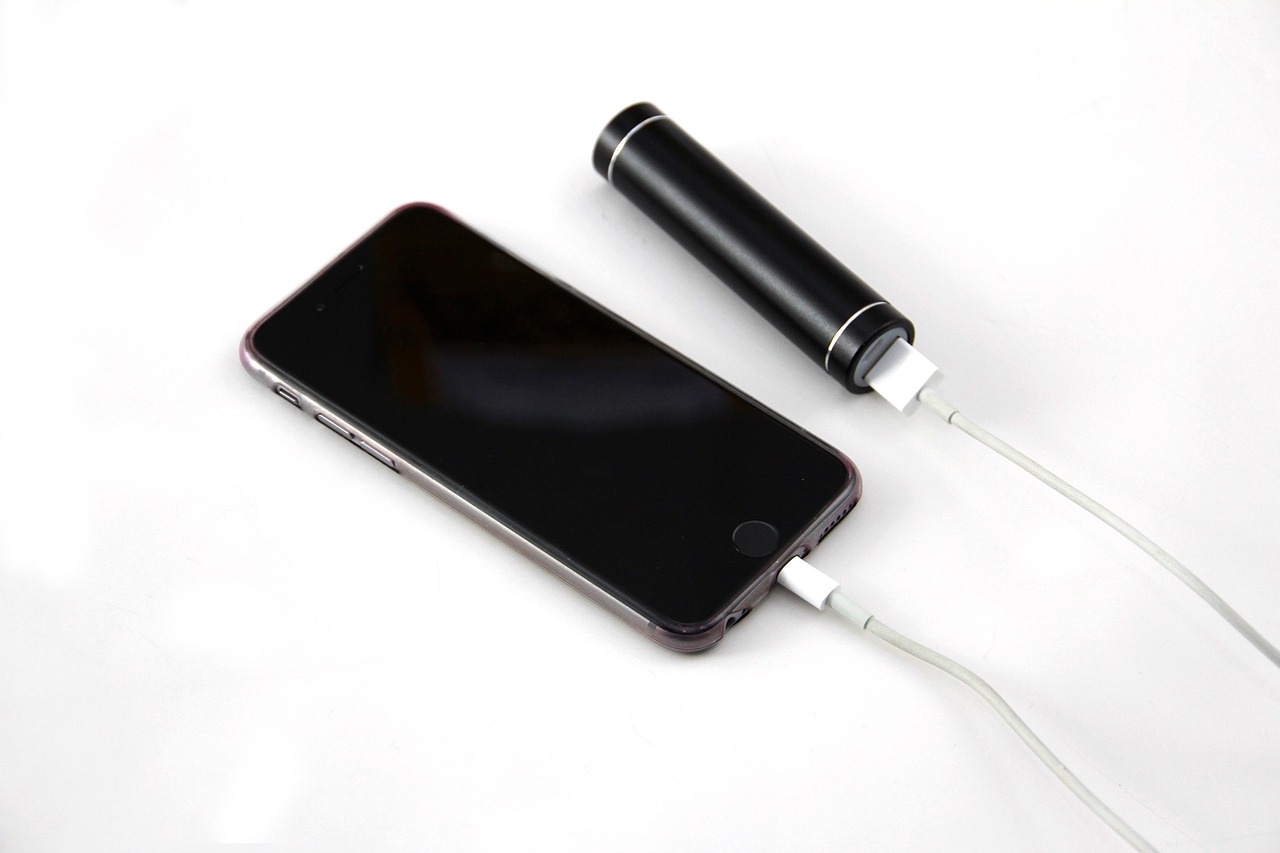
Best Fast Chargers in 2025
Chargers are a dime a dozen, but only a handful separate themselves from the pack. Here are some of the best fast chargers for iPhones in 2025:
- Anker Nano II 30W – Compact, powerful, and reliable.
- Belkin BoostCharge Pro 25W – Apple-endorsed and beautifully built.
- Apple 20W USB-C Power Adapter – The safest choice, straight from Apple.
- Spigen ArcStation Pro 27W – Great performance at a lower price.
- Nomad 30W USB-C Adapter – Stylish and heavy-duty.
Any one of these will enable your iPhone’s complete fast-charging capabilities.
Tips for Getting the Fastest Charge Possible
Looking for the fastest charge available? Here are some expert tips to get things moving:
- Use Airplane Mode: Cuts off background tasks and radio signals.
- Avoid Using the Phone While Charging: Using apps drains power while it charges.
- Remove the Case: Some bulky cases trap heat, which slows charging.
- Keep Your Phone Cool: Heat is the enemy of battery efficiency.
- Always Use MFi-Certified Cables and Chargers: They ensure your phone accepts the full power supply.
Bonus tip: tip: If your iPhone is charging slowly even with the proper equipment, restart it and check for software updates. Sometimes the issue is just a glitch.
Wireless Charging Explained
Qi vs MagSafe: What’s the Difference?Wireless charging wasn’t always speedy and dependable. But that’s different now. iPhones today now feature two wireless charging options:
- Qi Wireless Charging: The industry standard. Works with most pads and stands. Maxes out at 7.5W for iPhones.
- MagSafe Wireless Charging: Apple’s own technology. Uses magnets to align your iPhone perfectly with the charger. Delivers up to 15W for supported iPhones.
Here’s a quick comparison:
| Feature | Qi Charging | MagSafe Charging |
|---|---|---|
| Max Power Output | 7.5W | 15W |
| Magnetic Alignment | No | Yes |
| Accessory Support | Limited | Extensive (wallets, stands, etc.) |
| Charging Speed | Slower | Faster |
If you’re wireless charging on a daily basis, MagSafe is an upgrade worth considering. It’s wireless charging, but smarter and faster.
Pros and Cons of Wireless Charging
Still unsure whether wireless is the way to go for you? Let’s balance the advantages and disadvantages:
Advantages:
- No charging port wear and tear
- Less cables = neater setup
- Convenient to charge while working or sleeping
- MagSafe accessories supported
Disadvantages:
- Slower compared to wired charging
- Produces more heat
- May misalign on non-MagSafe pads
- Requires proper placement to charge
Wireless charging is super convenient, especially at home or the office. For pure speed and efficiency, though, there’s no replacement for a USB-C quick charge. charge.
Best Wireless Chargers for iPhone
Looking to go wireless? These chargers are top-tier in 2025:
- Apple MagSafe Charger – The standard. Simple, fast, and reliable.
- Belkin BoostCharge Pro 3-in-1 – Charge your iPhone, Apple Watch, and AirPods all at once.
- Nomad Base One Max – Premium build and faster charging speeds.
- Anker PowerWave Magnetic Pad Lite – Budget-friendly MagSafe alternative.
- OtterBox Wireless Charging Stand – Rugged and perfect for desks.
No matter your budget or lifestyle, there’s a wireless charger that fits your needs.
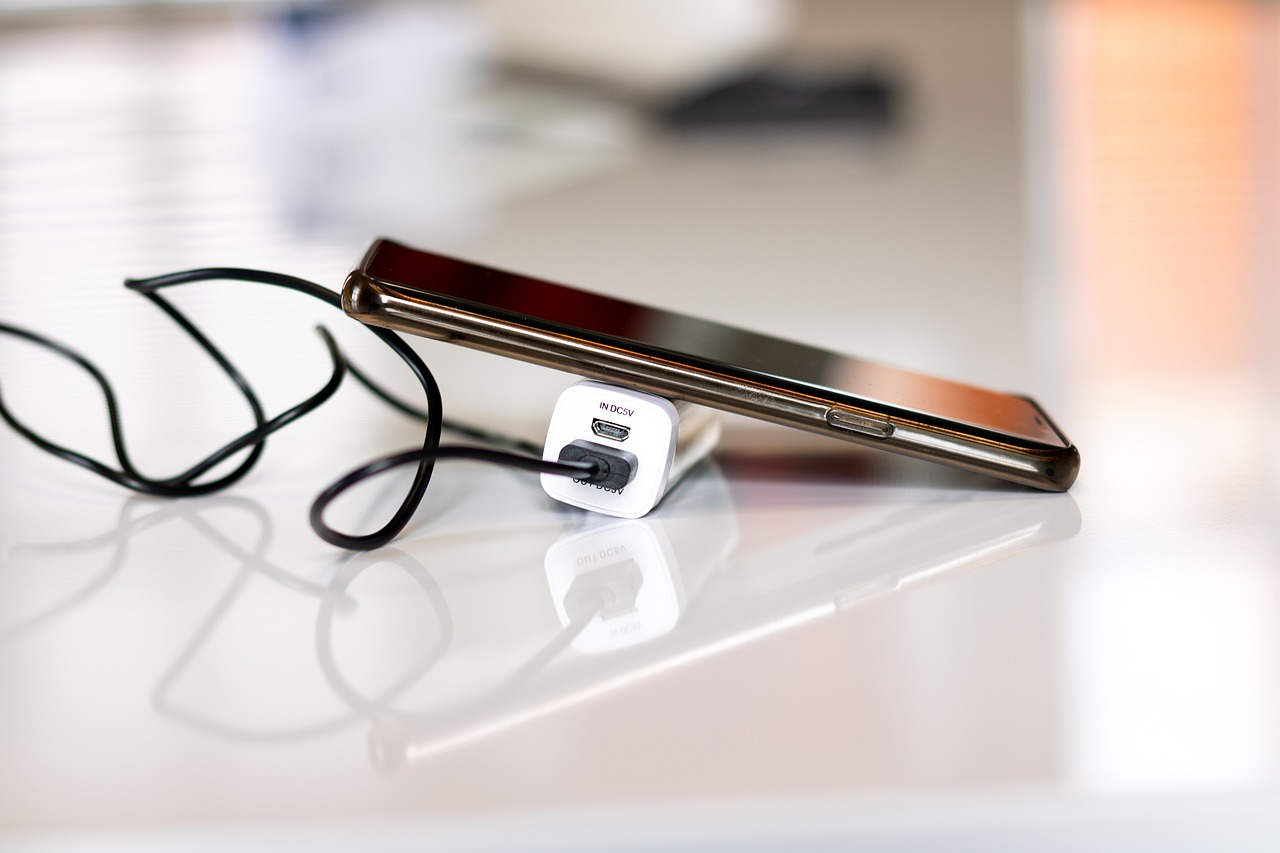
Battery Health and Charging Habits
How Charging Affects iPhone Battery Health
Apple iPhones have lithium-ion batteries, which are excellent for fast charging and durability, but only if they are well-treated. Poor charging habits can cause your battery to age faster than it should. You might notice your battery percentage decreasing quickly or the dreaded “Battery Health Degraded” message in Settings.
Here’s what happens behind the scenes: Lithium-ion batteries lose capacity slowly with every charge cycle (every full 0–100% charge). The more you charge and discharge your phone, especially in the heat or under stress, the faster this degradation happens.
So, what affects battery health the most?
- Heat: Charging at high temperatures or with poorly ventilated chargers causes heat buildup, which damages battery cells.
- Charging up to 100% on a daily basis: Apple recommends keeping between 20–80% on a daily basis.
- Using low-cost chargers: They typically lack protection circuits and produce irregular voltage.
- Wireless charging with poor alignment: Might heat the battery more than wired charging.
Apple’s “Optimized Battery Charging” feature reduces wear by learning your routine and delaying full charges until the time you need them. Turn it on under Settings > Battery > Battery Health.e helps reduce wear by learning your routine and limiting full charges until you need them. Turn it on under Settings > Battery > Battery Health.
Myths About Charging Your iPhone
There are a lot of myths floating around about iPhone charging. Let’s bust some of the biggest ones:
- Myth: Overnight charging kills your iPhone battery.
- Truth: iPhones are smart. They stop charging as soon as they hit 100%, especially with “Optimized Charging” turned on.
- Myth: Only Apple chargers are safe.
- Truth: Many third-party MFi-certified chargers are just as safe and even cheaper.
- Myth: You should always let your battery drop to 0%.
- Truth: Deep discharges are bad for lithium-ion batteries. Frequent full discharges reduce battery lifespan.
- Myth: Fast charging kills the battery faster.
- Truth: Fast charging is safe when using Apple-certified or compatible products. Apple designed the iPhone to handle it.
Don’t fall for internet hearsay—charging your iPhone properly isn’t rocket science. Just follow Apple’s guidelines and use trusted accessories.
Best Practices for Extending Battery Life
Want your iPhone battery to survive longer than a year or two? The following are some tips that can make it happen:
- Keep your iPhone cool – Avoid charging under pillows, in the car, or in direct sunlight.
- Use Optimized Charging – Helps your phone avoid prolonged high voltage charging.
- Unplug when charged – Especially if your phone gets warm.
- Charge regularly – Don’t wait until 0%. Staying between 20% and 80% helps battery health.
- Use MFi-certified accessories – Ensures consistent and safe voltage delivery.
- Update iOS regularly – Apple often improves battery health features in updates.
Following these habits can keep your iPhone battery at 90%+ capacity even after a few years.
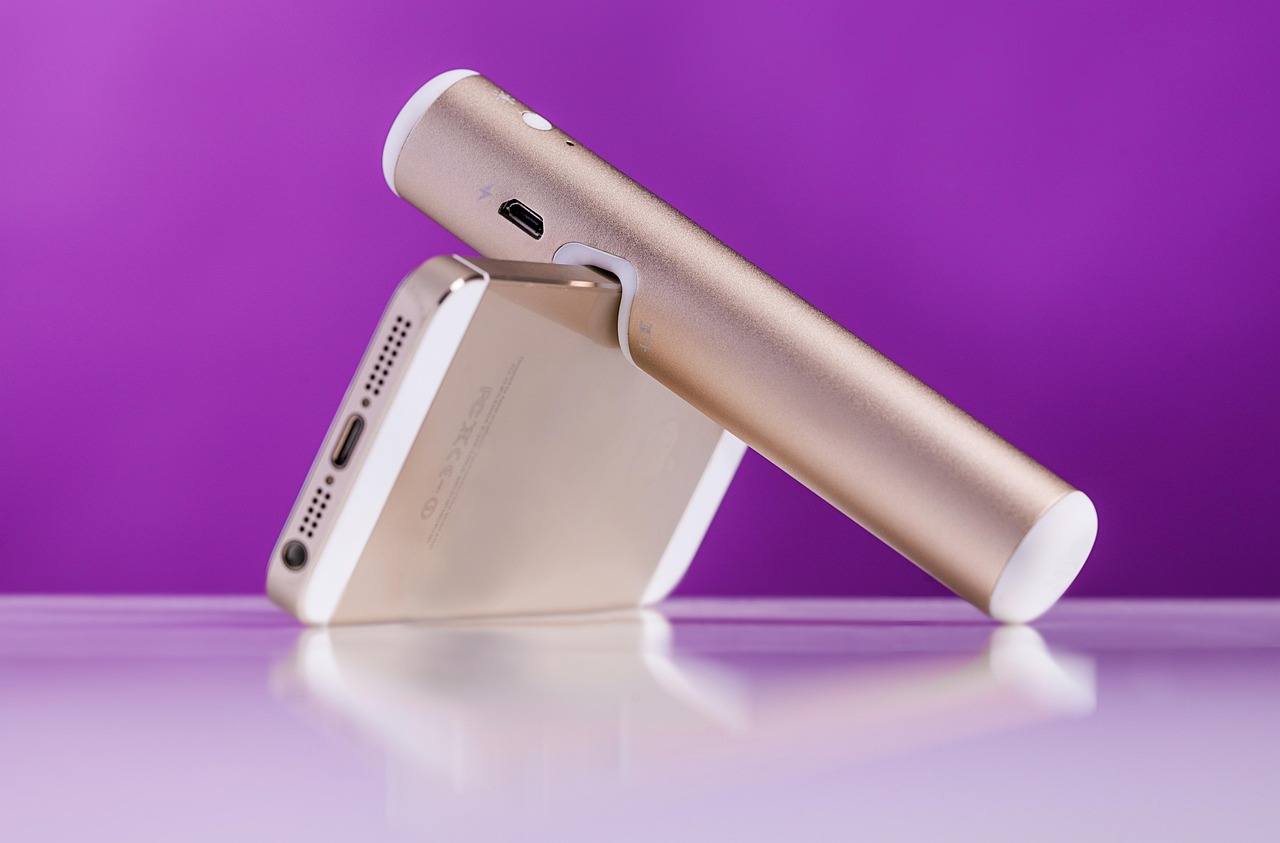
Travel and On-the-Go Charging
Portable Chargers and Power Banks
If you’re constantly on the road or traveling, a solid power bank is a must. A solid portable charger can keep your iPhone alive for days, especially during road trips, flights, or camping.
Here’s what you should look for:
- Capacity (mAh): More mAh means more charges. A 10,000 mAh bank gives you about 2 full iPhone charges; 20,000 mAh gives you up to 4.
- Power Output (W): To fast charge your iPhone, look for 18W or higher output.
- Ports: Multiple ports let you charge more than one device at a time.
- Size/Weight: Slim banks fit in pockets; larger ones are better for extended trips.
Top portable chargers in 2025:
- Anker PowerCore III Elite 25600 PD – Massive capacity with 60W output.
- RAVPower PD Pioneer 20000mAh – Great balance of size and power.
- Zendure SuperMini 20W – Pocket-sized and fast charging.
Some even support wireless charging or come with built-in Lightning cables, so you don’t have to carry extras.
Car Chargers for iPhone
Road tripping or stuck in traffic? A good car charger keeps your phone charged on the road. Don’t bother with the slow 1A charger from 2015—get one that provides fast charging and multiple ports.
Best car charger features to look for:
- USB-C PD port: For fast-charging iPhones.
- Dual ports: Charge a second device (or let your passenger plug in).
- Built-in cable: Fewer wires to mess with.
Top picks:
- Anker PowerDrive III Duo – Dual USB-C ports with 36W combined output.
- Belkin BoostCharge Dual Car Charger – Sleek, reliable, and MFi certified.
- Scosche MagicMount Pro Charge5 – Doubles as a MagSafe-compatible mount.
Charge while you navigate with Apple Maps, stream music, or just keep your phone alive.
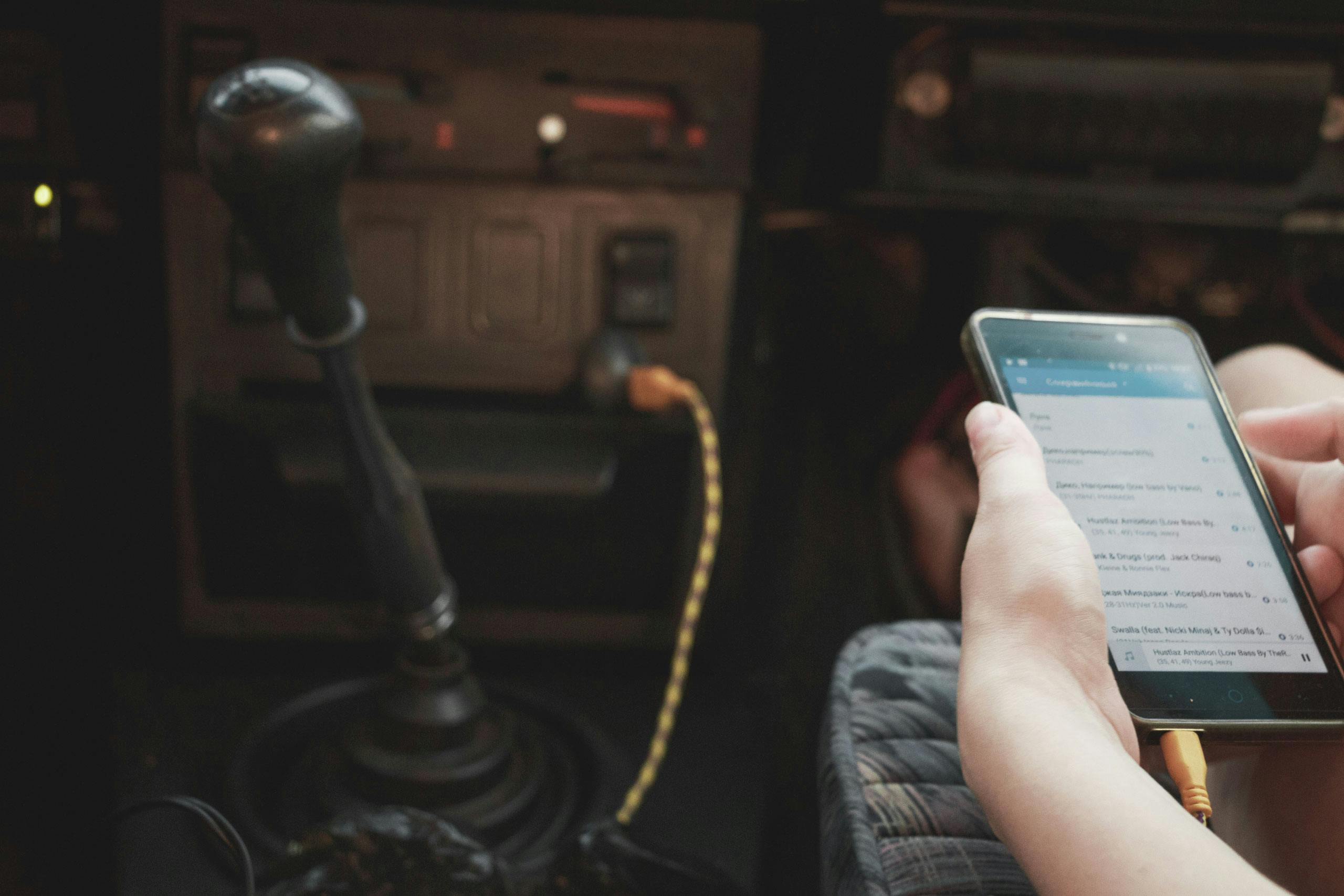
International Charging Tips
Going overseas? You’ll need more than just a travel adapter. Here’s what to consider:
- Voltage Compatibility: iPhone chargers handle 100–240V, but check your power bank too.
- Plug Adapters: Europe, UK, Asia—all use different outlets. Grab a universal adapter.
- Portable Chargers: Keep one in your carry-on. Airport delays are brutal without battery.
- Avoid Charging on Planes: Unless it’s a certified outlet. Voltage can be unstable.
Also, check if your destination has USB-C becoming the new standard. Europe’s mandate for USB-C by 2024 means older Lightning-only chargers might be phased out soon.
MagSafe Charging Technology
How MagSafe Improves Charging Experience
Apple’s MagSafe system didn’t just bring wireless charging—it reinvented it. With MagSafe, charging is faster, more stable, and a whole lot cooler (both literally and figuratively).
Why is it better?
- Perfect alignment: Magnets in the back snap your iPhone into position, reducing energy loss and overheating.
- Faster charging: Up to 15W versus 7.5W from standard Qi chargers.
- Accessory integration: From wallets and stands to power banks and car mounts.
You can even stack MagSafe accessories—a wallet on top of a case, on top of a charger. Try that with a Qi pad!
If you’re running an iPhone 12 or newer, MagSafe is a no-brainer. It turns charging into an experience, instead of a chore.
Best MagSafe Accessories in 2025
Here are some of the best MagSafe accessories to power up your setup:
- Apple MagSafe Charger – Reliable, minimal, and designed by Apple.
- Anker 3-in-1 Cube with MagSafe – Compact and perfect for traveling.
- Belkin MagSafe Car Vent Mount Pro – Secure mount and wireless charging on the go.
- Nomad Base One Max – Premium feel and efficient charging.
- OtterBox Wireless Power Bank for MagSafe – Snap-on power bank, ideal for outdoor use.
Whether you’re at home, commuting, or working remotely, these accessories make charging seamless and stylish.

Comparing MagSafe to Traditional Charging
So, is MagSafe worth it? Here’s a side-by-side breakdown:
| Feature | MagSafe Wireless | Traditional Wired |
|---|---|---|
| Max Charging Speed | 15W | 20W+ |
| Ease of Use | Very Easy | Moderate |
| Port Wear and Tear | None | Can degrade port |
| Portability | High (accessories) | High |
| Heat Generation | Moderate | Low |
| Device Alignment | Automatic | Manual |
MagSafe offers a more modern, cable-free lifestyle with minor trade-offs in speed. For most users, the convenience outweighs the slight delay.
Troubleshooting Charging Problems
Common iPhone Charging Issues
Even the best chargers sometimes fail. If your iPhone won’t charge, don’t panic—it’s probably something easy. Here are the most common issues:
- Dirt or lint in the charging port: This prevents the connection and can keep your phone from charging whatsoever.
- Frayed or damaged cables: Even tiny tears in the cable can keep power from passing through.
- Overheating: Your phone may refuse to charge if it gets too hot.
- Incorrect power adapter: A non-certified or underpowered charger can lead to not charging correctly.
- Battery or software issues: It could at times be your iPhone battery health or an operating system bug.
Attempt simple solutions before jumping to the worst-case scenario—switch the cable, use another outlet, or restart the phone.
Diagnosing and Fixing Charger Malfunctions
Supposing that your charger has suddenly stopped functioning. Diagnose and possibly repair it as follows:
- Test with another device: Plug your charger into your friend’s iPhone or another Apple device. If it’s functioning, your phone might be the issue.
- Switch power sources: Try a different wall outlet or USB port. Faulty power sources are more common than you think.
- Inspect for physical damage: Look for bends, tears, or discoloration on the cable or adapter.
- Clean the Lightning port: Use a plastic or wood pick to clear out debris carefully. Avoid using metal tools—they will bend the pins.
- Update iOS: Sometimes an update to iOS will contain bug fixes for charging issues.
If none of these work, your cable or adapter is likely dead. Time to purchase a new one.
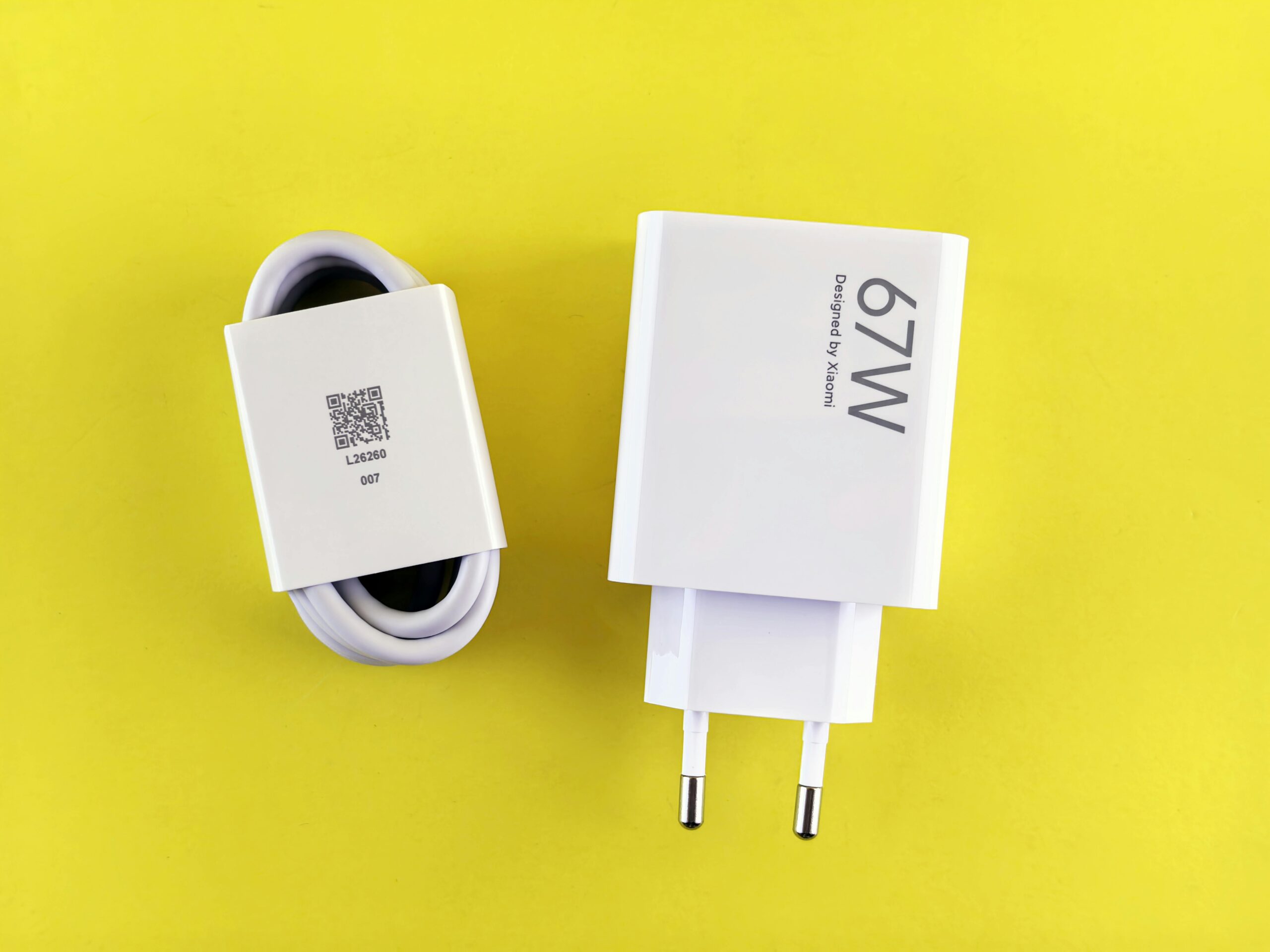
When to Replace Your Charger or Cable
Still using that cable from your iPhone 6? It’s probably time to say goodbye. Here are clear signs it’s time to replace your charging gear:
- Frayed or exposed wires
- Charger overheating during use
- Inconsistent charging (starts and stops randomly)
- Cable only works when bent a certain way
- Your iPhone shows “Accessory not supported” message
Don’t wait until it’s completely dead. Replace it early to avoid sudden charging failures or even electrical hazards.
Future of iPhone Charging
What to Expect from Future Apple Charging Innovations
The future of iPhone charging is going to be ambitious. Apple is slowly doing away with physical ports—one by one abolishing the headphone jack, and now more actively pushing wireless charging than ever. Leaks and concept designs suggest that future iPhones may be entirely wireless or MagSafe charging only.
What can we expect?
- Portless iPhones: No Lightning, just MagSafe and wireless data transfer.
- Improved MagSafe: Faster speeds, better thermal control, and support for more accessories.
- Solar charging accessories: Especially for outdoor and eco-conscious consumers.
- Universal USB-C charging: Thanks to European law, Apple is increasingly moving to USB-C, starting with Macs and iPads.
Based on Apple’s history of innovation, expect anything remarkably simple and surprisingly powerful.
Rumors and Leaks About iPhone 16 Charging
Leaks suggest iPhone 16 will be Apple’s first completely portless phone. If it’s true, this means:
- No Lightning cable port
- MagSafe and wireless charging only
- Enhanced wireless data transfer (AirDrop 2.0?)
- More powerful MagSafe magnets for secure mounting
Expect Apple to double down on MagSafe improvements, including higher wattage wireless charging (even 20W+ wireless), more accessories, and power-efficient software optimizations.
Still married to ancient tech? It’s time to start making the transition.
Wireless-Only iPhones: Is It Coming?
Yes—Apple is heading in that direction, and fast. It aligns with their vision of a minimalist, clean design. A wireless-only iPhone would mean:
- No ports, fewer points of failure
- Greater water and dust resistance
- Seamless integration with wearables and accessories
- Potential for slimmer designs
Drawbacks? You’d need to invest in wireless charging gear. But considering how reliable MagSafe has become, it might not be a bad trade-off.
Environmental Impact of iPhone Chargers
Apple’s Green Initiative and Charger Exclusion
Apple caught everyone off guard when it started omitting chargers from the packaging of the iPhone 12 and beyond. Why? To promote environmental sustainability.
Apple had the following reasons:
- Less e-waste from duplicate chargers
- Smaller packaging = more products per shipment = less carbon emissions
- Encouraging reuse of existing accessories
Critics called it a cash grab. Yet there’s truth in the numbers—Apple spared millions of metric tons of emissions and reduced mining of hazardous materials.
You won’t need a new charger if you already own a USB-C charger. And if you don’t? You get to opt for a charger that suits your exact needs instead of being forced into a default 5W adapter.
How to Recycle Old Chargers
Don’t simply throw that old cable in the garbage. Here’s where to recycle it responsibly:
- Apple Trade-In or Recycling Program: Take it to Apple Stores.
- E-waste collection centers: Most cities have technology-specific recycling programs.
- Retailer programs: Best Buy, Staples, and others take in old electronics.
Why bother? Chargers have metals such as copper, which can be recycled. And, incorrect disposal adds to toxic waste in landfills.
Choosing Eco-Friendly Charging Options
Eco-friendly doesn’t have to mean “boring” or “underpowered.” Look for:
- Solar-powered chargers: Great for travelers and outdoor lovers.
- Recycled materials: Brands like Nimble use sustainable plastics and packaging.
- Energy-efficient adapters: Low idle power usage = smaller carbon footprint.
Make a small change for your tech—and a big one for the planet.
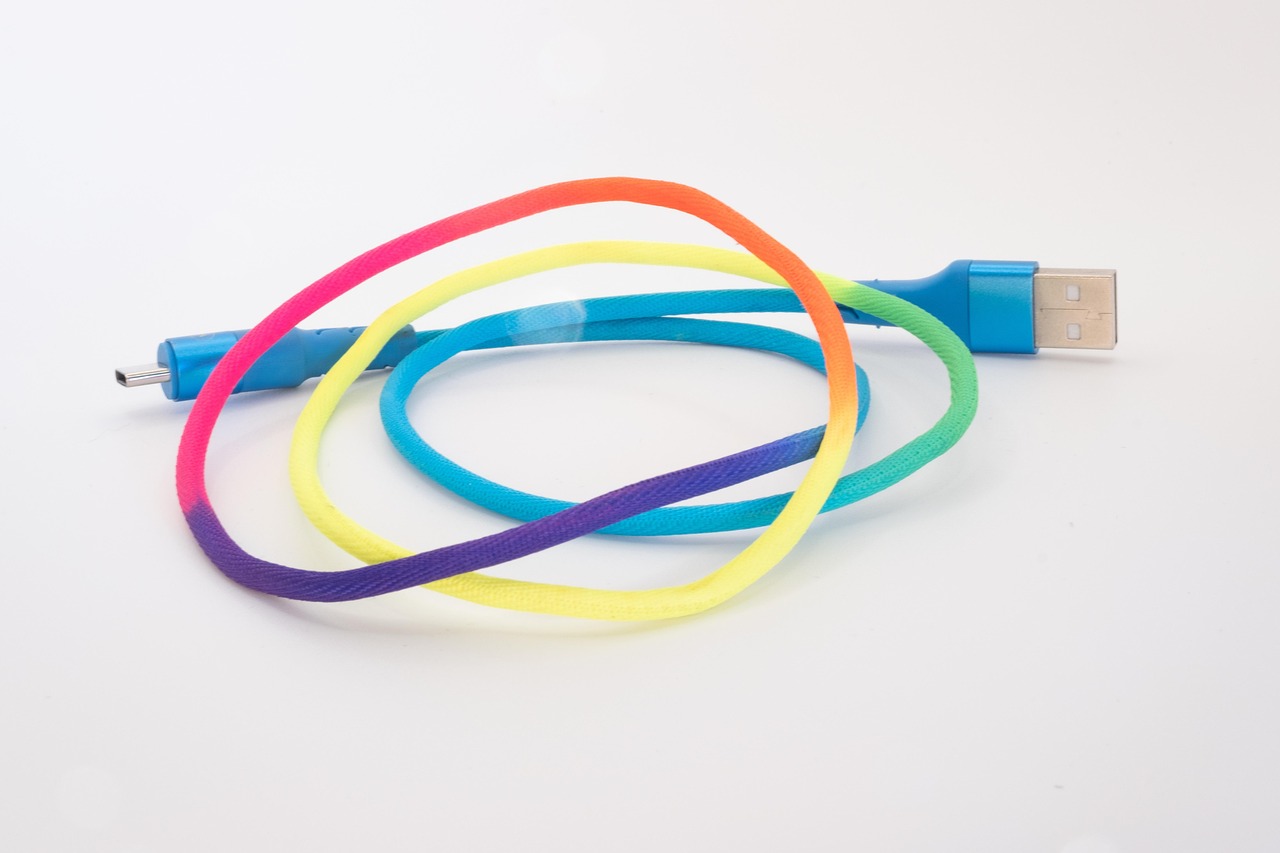
Top 5 iPhone Chargers to Buy in 2025
Best Overall Charger
Anker Nano II 30W USB-C Charger
This is the gold standard. Powerful, compact, and dependable, the Nano II employs GaN tech for ultra-fast charging in a small form factor.
Best Budget Charger
Spigen ArcStation Pro 27W
Budget-friendly but MFi-certified and fast-charging. It’s ideal for users who need quality without Apple tax.
Best Wireless Charger
Apple MagSafe Charger
Effortless, fast, and efficient. It’s Apple-built, so compatibility and safety are assured.
Best MagSafe Charger
Belkin BoostCharge Pro MagSafe 3-in-1
Charge your iPhone, Apple Watch, and AirPods—all at the same time. A sleek, reliable desk companion.
Best Travel Charger
Nomad 30W Travel Adapter
Collapsible, rugged prongs and worldwide voltage support. It’s the traveler’s dream.
Conclusion
Choosing the right iPhone charger in 2025 isn’t just about plugging in and powering up. It’s about maximizing efficiency, protecting your device, embracing new technology like MagSafe, and even reducing your environmental footprint. Whether you’re a power user looking for blazing-fast speeds or a minimalist who values wireless simplicity, there’s a charger that fits your style.
Invest in quality equipment. Not only will this enhance your iPhone experience, but it’ll also save you from headaches in the future, slow charging problems, and battery issues. Opt for certified brands, keep your cables organized, and always prioritize performance over cost.

FAQs
Q 1: Can I use my old iPhone charger with new models?
Ans: Yes, but it may charge more slowly. For fast charging, use a USB-C charger with a Lightning cable.
Q 2: Is it okay to leave my iPhone charging overnight?
Ans: Yes, especially with “Optimized Battery Charging” turned on. Modern iPhones manage power intelligently.
Q 3: What’s the difference between USB-A and USB-C for iPhones?
Ans: USB-C supports faster charging and data transfer. It’s the standard for fast charging with iPhones 8 and newer.
Q 4: How do I know if my charger is fast charging?
Ans: Your iPhone will display a noticeable battery increase—around 50% in 30 minutes. You can also check the charger’s wattage (20W+ for fast charging).
Q 5: Can wireless charging damage my battery?
Ans: Not if you use certified, high-quality chargers like MagSafe. Avoid overheating, and you’re good to go.

